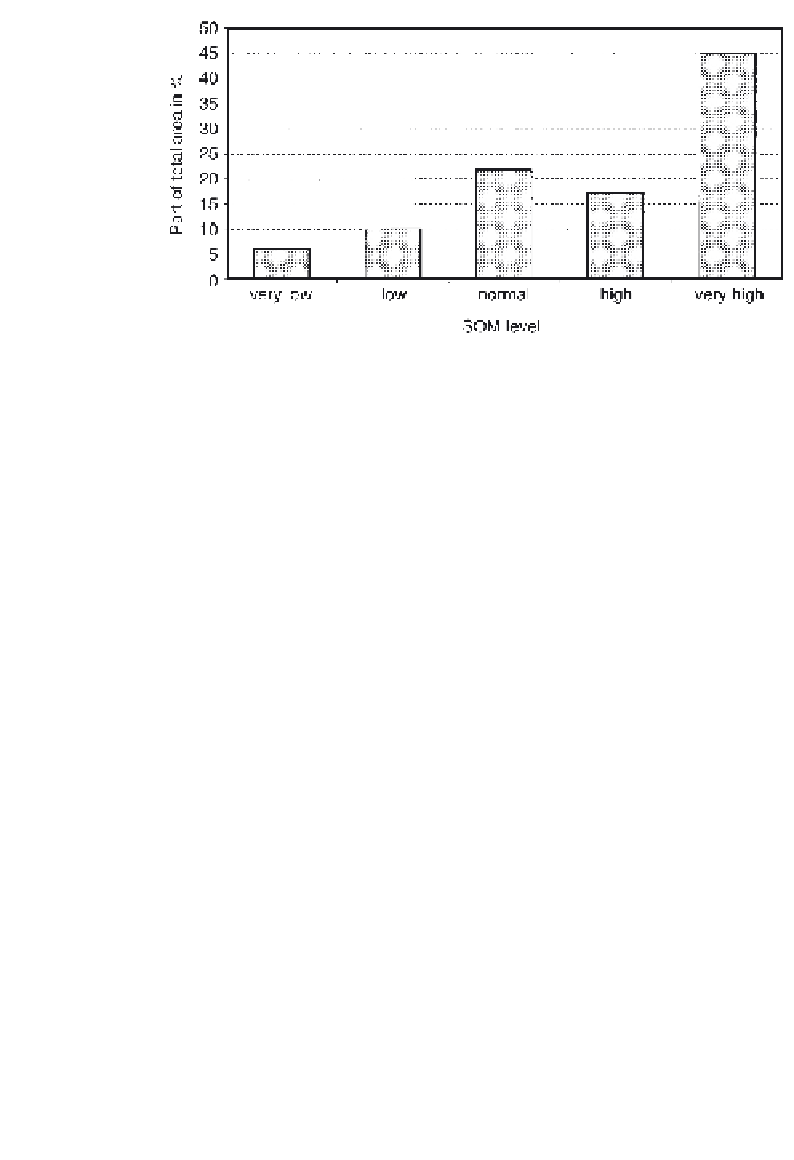Agriculture Reference
In-Depth Information
Fig. 2.2.3.
Regional classification of the SOM level according to the average carbon input.
into the environment. In order to avoid this risk and to keep the system at
an optimal SOM level, it is necessary to find new solutions for organic
material management that guarantee an equal distribution of the required
carbon combined with an energetic usage of the surplus.
Conclusions
Model outputs show an increase in carbon storage in the soil of the investi-
gated area due to higher inputs of organic material. Under the current
conditions, the nitrogen export into the environment is lower than the
nitrogen import from the atmosphere. Results of the long-term experiment
at Bad Lauchstädt indicate an optimal rate of SOM turnover of ~90 g m
−2
.
Using this as the indicator for the evaluation of the carbon dynamics in the
investigation area, a surplus of organic matter can be found that could
cause an increase in nitrate exports into the environment. Surplus of
organic matter could be used better for the replacement of fossil fuels in
order to reduce the carbon dioxide output to the atmosphere.
References
Brenndörfer, M., Dreiner, K., Kaltschmitt, M. and Sauer, N. (1994) Energetische
Nutzung von Biomasse.
KTBL-Arbeitspapier 199
, KTBL, Darmstadt.
Franko, U. (1996) Modelling approaches of soil organic matter turnover within the
CANDY system. In: Powlson, D.S., Smith, P. and Smith, J.U. (eds)
Evaluation
of Soil Organic Matter Models. Using Existing Long-Term Datasets. NATO ASI
Series, Global Environmental Change
Vol. 38. Springer-Verlag, Berlin, pp.
247-254.











Search WWH ::

Custom Search